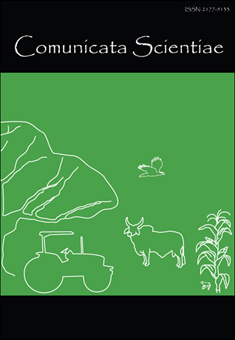Evaluation of radical scavenging properties and the protective role of papaya fruits extracts against oxidative stress in rats fed aflatoxin-contaminated diet
DOI:
https://doi.org/10.14295/cs.v4i1.191Keywords:
Aflatoxins, mycotoxins, oxidative stress, antioxidant, Carica papayaAbstract
This study aimed to determine the total phenols and DPPH scavenging properties of aqueous (AE) and ethanolic (EE) extracts of papaya fruits in vitro and to evaluate their hepatoprotective effects against aflatoxicosis in vivo. Sixty female Sprague-Dawley rats were divided into six groups and treated for 4 weeks including the control group, the group fed aflatoxins-contaminated diet (2 mg/ kg diet); the group treated orally with EE (250 mg/kg b.w); the group treated orally with AE (250 mg/ kg b.w); the groups fed AFs-contaminated diet and treated with EE or AE. At the end of the treatment period, blood and liver samples were collected for biochemical, histological and histochemical study. The results revealed that AE has higher total phenol content and DPPH scavenging activity if compared to EE. The in vivo results indicated that animals fed AFs-contaminated diet showed significant biochemical, histological and histochemical changes typical to those reported in the literature. Animals treated with the extracts and AFs showed a significant improvement in all biochemical parameters, histological and histochemical picture of the liver. This improvement was more pronounced in the group treated with AE. It could be concluded that papaya fruits can be used as a functional dietary ingredient to reduce hepatotoxicity.Downloads
Download data is not yet available.
Downloads
Published
2013-03-29
How to Cite
Hassan, N. S., Abdel-Wahhab, K. G. A.-W. G., Khadrawy, Y. A. K. A., El-Nekeety, A. A. E.-N. A., Mannaa, F. A. M. A., & Abdel-Wahhab, M. A. (2013). Evaluation of radical scavenging properties and the protective role of papaya fruits extracts against oxidative stress in rats fed aflatoxin-contaminated diet. Comunicata Scientiae, 4(1), 43–57. https://doi.org/10.14295/cs.v4i1.191
Issue
Section
Original Article
License
All articles published may be reproduced or utilized in any form or by any means whether specified Comunicata Scientiae, author(s), volume, pages and year. The authors are responsible for all the statements and concepts contained in the article.




